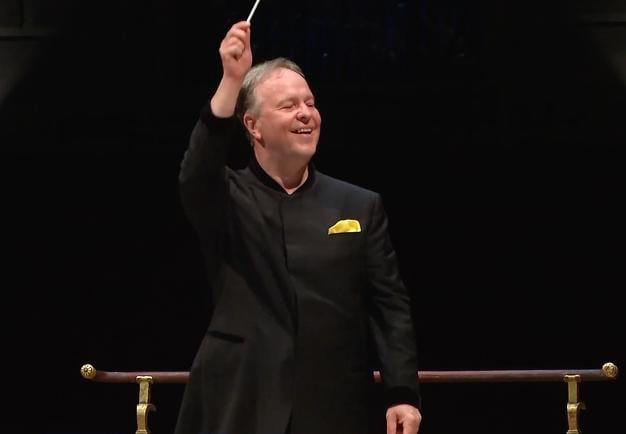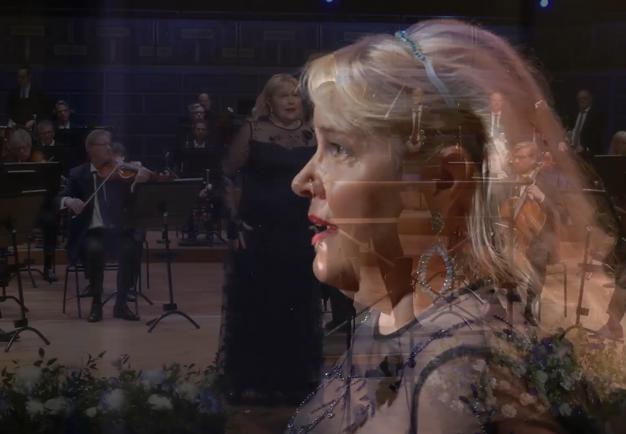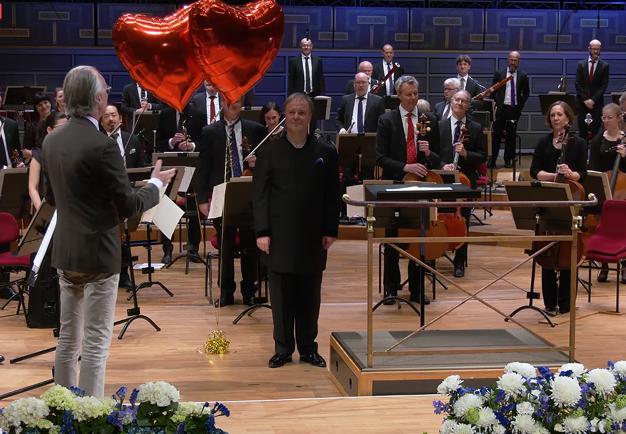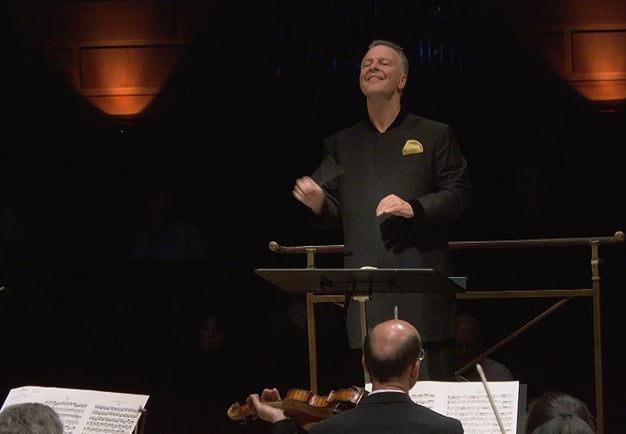Grande Finale – Sibelius with Oramo III
Sakari Oramo leads the Royal Stockholm Philharmonic Orchestra in Sibelius’ Symphony No. 5, the Violin Concerto and Finlandia. Lisa Batiashvili is the soloist – by many considered the foremost interpreter of the Sibelius concerto of our time.
About the video
- From a livestream 26 May 2021.
- The video is approximately one hour and 34 minutes.
Grand Finale: Sakari Oramo’s final concerts as chief conductor of the Royal Stockholm Philharmonic Orchestra were an in-depth journey through Jean Sibelius’ creations, including all seven symphonies in chronological order. “In his case specifically, I believe the order matters”, said Sakari Oramo. “He worked on several symphonies simultaneously, and there are always elements in one symphony that can be detected in the symphony preceding it.”
In the summer of 1914, Sibelius wrote in his diary: “Found a wonderful theme!” He had seen 16 swans. “One of my life’s great experiences! My God, what beauty.” At that point, the fifth symphony had been in his mind since 1912. Yet these were uncertain times: World War I was around the corner and he personally faced significant financial troubles. He struggled with the form in Symphony No. 5 and felt hesitant to the very end. Four movements became three, with a hugely eventful and original first movement. After a contrasting, almost naive middle movement comes the triumphant finale, including the famous “swan call”. Along with Symphony No. 2, Symphony No. 5 is perhaps Sibelius’ most beloved.
While working on the fifth symphony, Sibelius had also started planning a new violin concerto, but those thoughts ultimately evolved into a sixth symphony. The violin concerto that eventually came to fruition originated in sketches from 1899. In late 1903, two of the three movements were finished. Sibelius, a violinist, worked on the piece intensively. “He keeps watch all night long,” said his wife Aino Sibelius, “plays incredibly beautifully, unable to break free from these enchanting notes – he has so many ideas, it is truly astonishing. And all of these motifs have much to develop, they are full of life.” After the world premiere in 1904, the piece underwent a major revision and the version that is best known today was published in 1906.
Sibelius’ Violin Concerto is one of the most played of all violin concertos composed in the twentieth century. This concerto gave Georgian-German violinist Lisa Batiashvili’s luminous career an international running start – when, as a sensational musician at only 16 years of age, she was a finalist in the prestigious Sibelius Competition in 1995. It was also the first time that Batiashvili played with an orchestra. Sakari Oramo was the conductor and now they meet again.
The concert opens with Finlandia; a small piece among all of his larger one, but with a strong symbolic value and one of Sibelius’ most well-known. The original version was premiered on the occasion of the Press Celebrations of 1899, a covert protest against increasing censorship from the Russian Empire.
-
The music
-
Jean Sibelius Finlandia op 26
-
Jean Sibelius Symphony No. 5
-
Interview with Lisa Batiashvili
-
Jean Sibelius Symphony No. 5
-
Participants
-
Royal Stockholm Philharmonic Orchestra
-
Sakari Oramo conductor
-
Lisa Batiashvili violin




